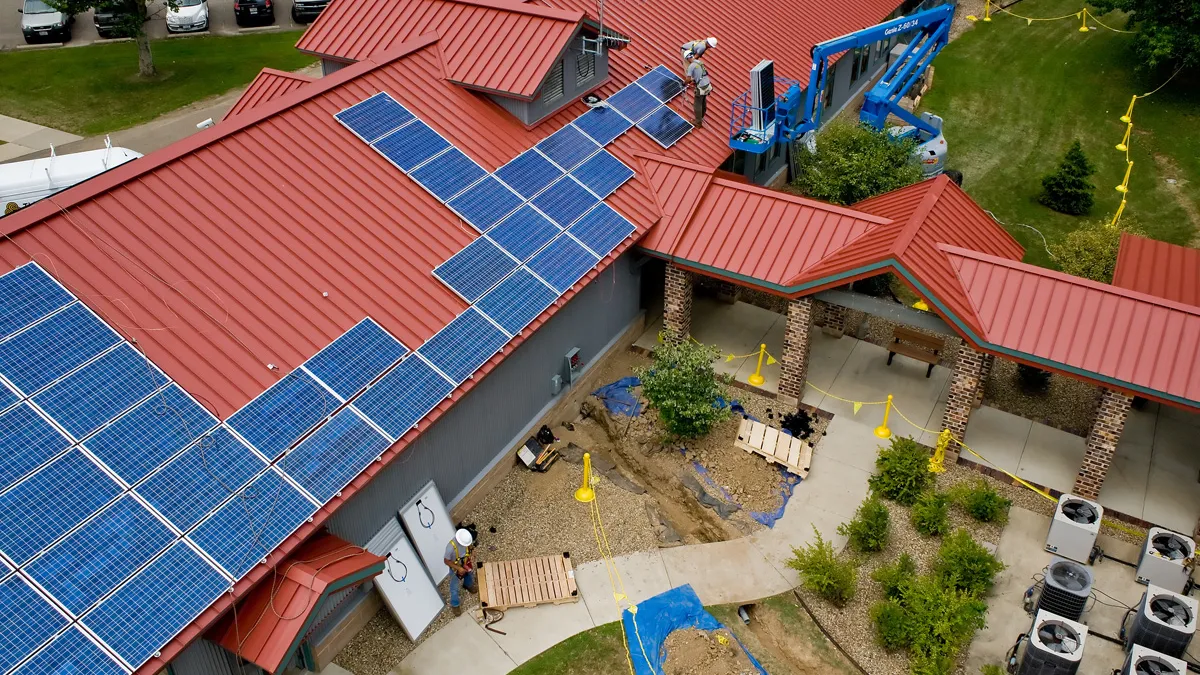Dive Brief:
- The U.S. Department of Energy on Tuesday announced $400 million in formula funding to assist in the adoption and implementation of updated building energy codes for new residential and commercial construction.
- States and territories will be able to reserve funds with a commitment to adopt either the latest model energy codes or zero energy codes, a senior DOE official said in a Monday call with reporters. They have 60 days to indicate their intention to adopt new codes.
- If all states updated to the most recent model energy codes, DOE estimated that over the course of 30 years this would generate sufficient energy savings to power all homes in the United States for a year.
Dive Insight:
The $400 million announced Tuesday was included in the Inflation Reduction Act and will assist in the development of “cleaner, more efficient buildings” across the country, according to DOE’s announcement. In total, the IRA provided $1 billion for state and local governments to adopt new building codes.
Adoption of new building energy codes could save consumers up to $178 billion over three decades, DOE said.
“This is really about partnering with localities, partnering with communities that we know implement these codes, and really helping them build the networks and capacity and raise awareness around their compliance and enforcement,” the senior DOE official said.
Homes built to newer standards are “dramatically cutting energy costs for consumers,” DOE said, and “are nearly 40% more efficient than homes built just 15 years ago.”
Included in the new funding announcement is $240 million to assist in implementing the latest building energy codes, which include the 2021 International Energy Conservation Code for residential buildings and the American Society of Heating, Refrigerating and Air-Conditioning Engineers’ Standard 90.1–2019 for commercial buildings. Another $160 million will be available to help states and territories adopt and implement the zero energy provisions in the 2021 IECC.
The funds can also be used to implement other codes with equivalent or greater energy savings, DOE said. To reserve funding, states and territories must submit letters of intent by Nov. 21 and “that would be followed by a longer application period, over multiple years, so they can ... figure out with their state legislatures or their code making bodies how they're going to move forward,” the senior agency official said.
The funding can be used in a variety of ways, including code implementation, which allows for fuel studies, analysis, workforce training, education and development, and other uses, they said.
DOE also said it intends to release a complimentary competitive funding announcement in the coming months to provide “direct support to states and local governments with code adoption authority for more innovative code approaches, including building performance standards.”















